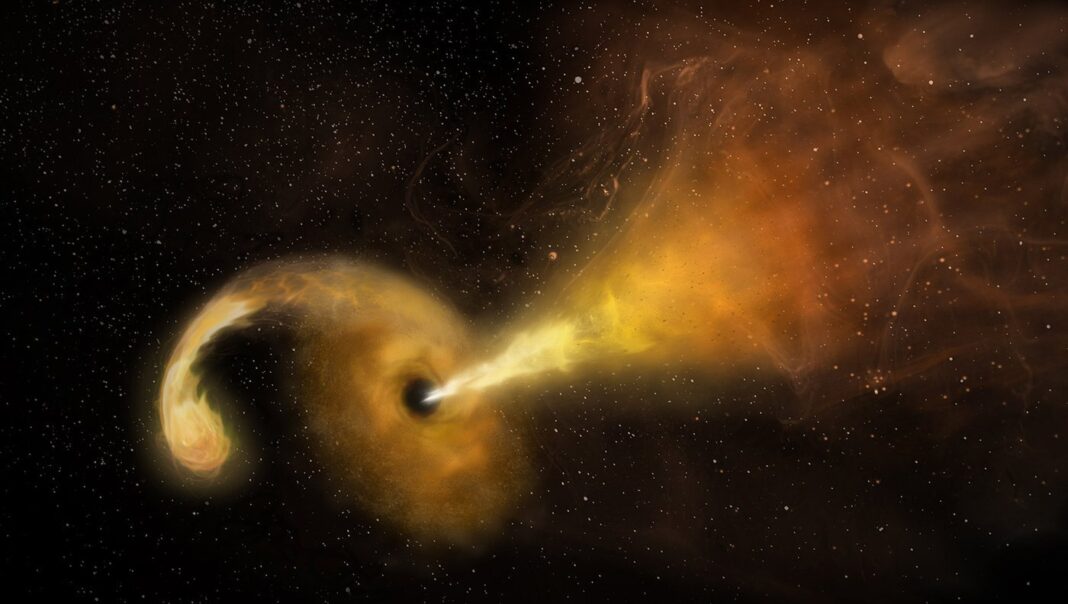Every galaxy, including our Milky Way, has at its centre a massive black hole whose gravity influences the stars around it. Generally, the stars orbit around the black hole without incident, but sometimes a star will wander a little too close, and the black hole will “make a meal” of the star in a process astrophysicists have termed spaghettification. “Gravity around the black hole will shred these unlucky stars, causing them to be squeezed into thin streams and fall into the black hole,” says Vikram Ravi, assistant professor of astronomy at the California Institute of Technology. “This is a really messy process. The stars don’t go quietly.” As the stars are devoured, their remains swirl around the black hole and glow with light of different frequencies, which telescopes can detect. In some cases, the stellar remains are expelled in powerful jets that shine with radio-frequency light waves. Ravi and his team, including two graduate students at Caltech, have discovered what appears to be one of these black-hole-eating-a-star events – also known as tidal disruption events, or TDEs – using archival observations made by radio telescopes. Of the roughly 100 TDEs that have been discovered to date, this is only the second candidate to be found using radio waves. The first was discovered in 2020 by Marin Anderson, a postdoctoral scholar at JPL, which is managed by Caltech for NASA. “TDEs are primarily discovered in optical and X-ray light, but these methods may be missing some TDEs, such as those buried in dust,” says Ravi, who is lead author of a report on the findings accepted for publication in The Astrophysical Journal. The same newfound TDE was also uncovered by astronomers at the University of Toronto, so the scientists jointly published their findings. The new TDE event, called J1533+2727, was first noticed by Ravi’s team after two high school interns from Cambridge, Massachusetts – Ginevra Zaccagnini and Jackson Codd – scanned through decades of radio data captured by the National Radio Astronomy Observatory’s (NRAO’s) Karl G. Jansky Very Large Array (VLA) in New Mexico. The students worked with Ravi from 2018 to 2019 while he was a postdoctoral fellow at Harvard University. By comparing radio observations taken years apart, they found that one object, J1533+2727, was fairly bright in the mid-1990s but had dramatically faded by 2017. Like detectives uncovering new clues in a historical case, they searched the archives of the NRAO’s Green Bank 300-foot telescope and learned that the same object was even brighter in 1986 and 1987 (the Green Bank telescope collapsed in 1988). Since its peak of brightness in the mid-1980s, J1533+2727 has faded by a factor of 500. Adding up the evidence, including brand-new VLA observations, the scientists think that the new TDE occurred when a supermassive black hole at the heart of a galaxy 500 million light-years away crushed a star and then expelled a radio jet travelling at near the speed of light. Three other TDEs have been associated with these so-called relativistic jets so far, but those were found in galaxies over 10 times farther away.
https://phys.org/news/2022-01-black-hole-devours-star-decades.html


